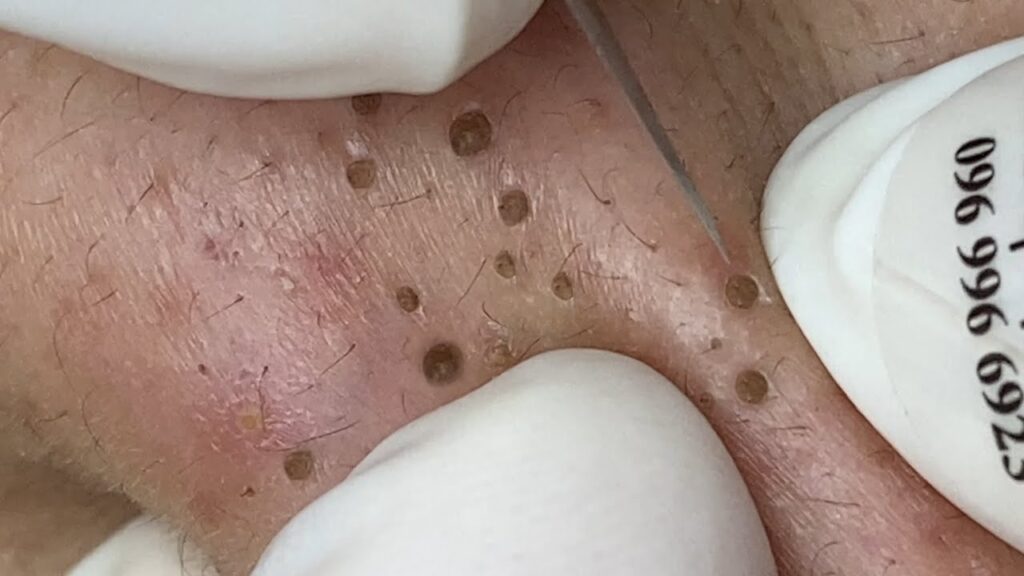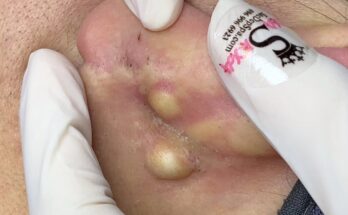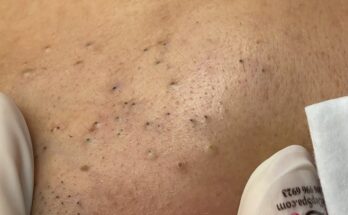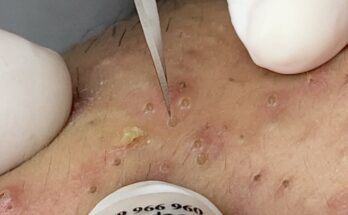
Building a simple, yet effective, skincare routine is a key strategy for managing acne and maintaining clear skin. The goal is to provide your skin with what it needs without overwhelming it, which can often lead to more breakouts.
The Four Pillars of a Simple Skincare Routine
A basic, anti-acne skincare routine can be broken down into four essential steps:
- Cleanser: The first and most crucial step is cleansing. This removes dirt, oil, makeup, and other impurities that can clog pores.
- Goal: To clean the skin without stripping it of its natural oils, which can lead to irritation and cause the skin to overproduce oil.
- Tips:
- Choose a gentle, non-stripping cleanser.
- Look for ingredients like salicylic acid or benzoyl peroxide if you need a treatment-focused cleanser, but be careful not to over-dry your skin.
- Wash your face twice a day—once in the morning and once at night.
- Treatment: This is the step where you target your specific acne concerns.
- Goal: To deliver active ingredients that combat acne-causing bacteria, reduce inflammation, or unclog pores.
- Common Ingredients:
- Salicylic Acid: A beta-hydroxy acid (BHA) that exfoliates inside the pore, making it effective for blackheads and whiteheads.
- Benzoyl Peroxide: An antibacterial agent that kills the P. acnes bacteria responsible for inflammatory acne.
- Retinoids: As discussed previously, they are excellent for promoting cell turnover and preventing clogged pores.
- Tips:
- Apply your treatment to clean, dry skin.
- Start with a lower concentration and gradually increase as your skin builds tolerance.
- Use at night, especially for retinoids.
- Moisturizer: Even oily, acne-prone skin needs a moisturizer. Skipping this step can dehydrate the skin, causing it to produce more oil to compensate, which in turn leads to more breakouts.
- Goal: To hydrate the skin barrier, keep it healthy, and prevent irritation from acne treatments.
- Tips:
- Choose a lightweight, non-comedogenic (won’t clog pores) moisturizer.
- Look for oil-free or gel-based formulas if you have oily skin.
- Apply after your treatment has had a chance to absorb.
- Sunscreen: This step is non-negotiable, especially when using acne treatments that can increase sun sensitivity (like retinoids and AHAs/BHAs).
- Goal: To protect the skin from harmful UV rays, which can worsen inflammation, cause dark spots (post-inflammatory hyperpigmentation), and accelerate aging.
- Tips:
- Use a broad-spectrum sunscreen with an SPF of 30 or higher.
- Choose a non-comedogenic formula to avoid clogging pores.
- Apply every morning as the last step of your routine.
Why Less is Sometimes More: Avoiding Product Overload
A common mistake when dealing with acne is to use too many products at once. This can be counterproductive for several reasons:
- Increased Irritation: Combining multiple potent ingredients (e.g., a salicylic acid cleanser, a benzoyl peroxide spot treatment, and a retinoid) can severely irritate and damage the skin’s protective barrier. An irritated barrier can lead to more breakouts, not fewer.
- Difficulty Identifying Triggers: If you’re using five new products at once and your skin breaks out, it’s impossible to know which one is the culprit. A simple routine allows you to introduce one new product at a time and see how your skin reacts.
- Stripping the Skin: Using too many harsh cleansers or exfoliants can strip the skin of its natural oils, leading to a damaged moisture barrier, dryness, and a vicious cycle of oil overproduction.
- Financial Waste: Buying countless products without a clear strategy is often a waste of money. A simple, well-thought-out routine is not only more effective but also more cost-efficient.
The key to a successful anti-acne routine is consistency, not complexity. Stick to the basics, be patient, and give your skin the time and space it needs to heal.


